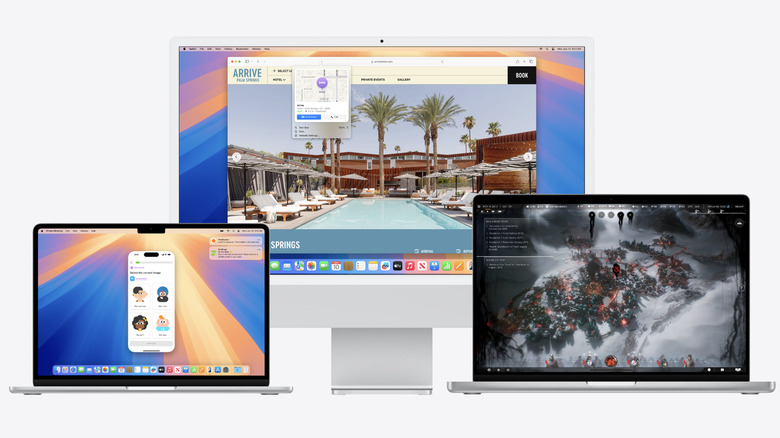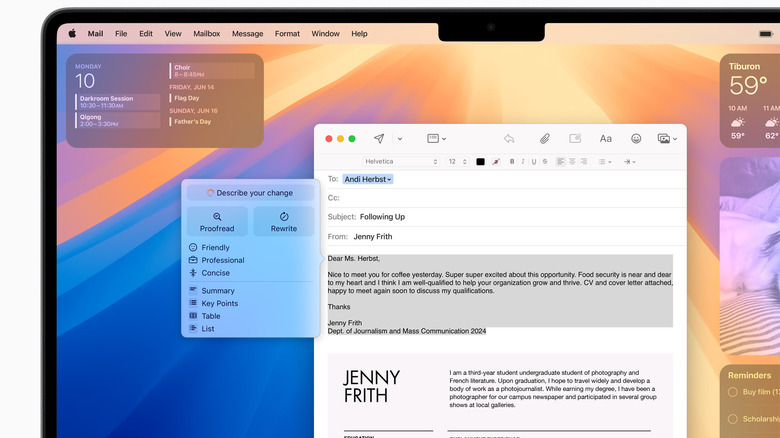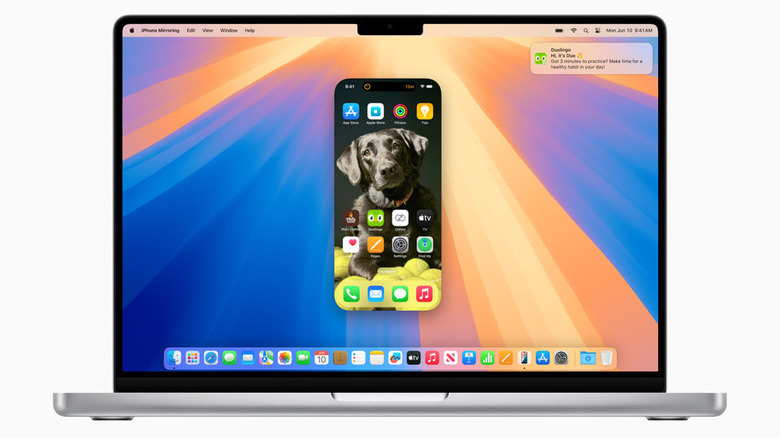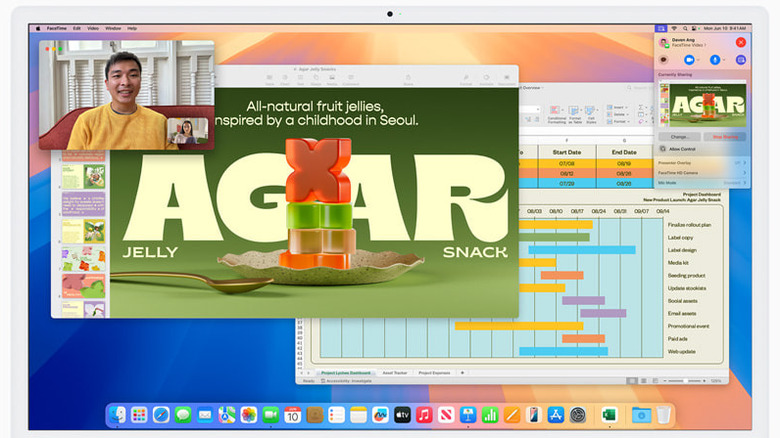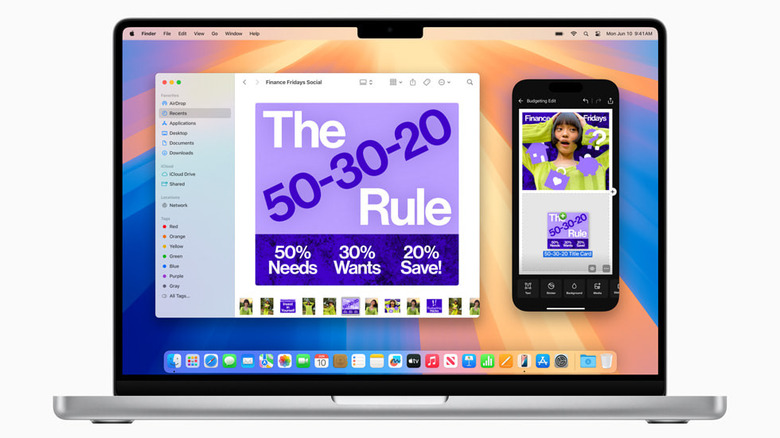Everything We Know About macOS Sequoia: Potential Release Date, Features & More
Fall is known as the season of change — leaves are transforming from green to red and yellow, temperatures are beginning to cool, and pumpkin spice invades cafés around the country. For many Apple users, it will also be the time they change operating systems and upgrade to the 15th and newest version of macOS 10: Sequoia. As with the last several iterations of the OS, which typically release annually, Sequoia is named after a part of California (Sequoia National Park).
At the time of this writing, an exact release date isn't yet known for Sequoia. Apple often keeps release dates and the precise dates of major events and announcements close to the vest until shortly before they happen, but the company's schedule is often fairly predictable since it's also consistent. For example, new iPhones are usually announced in September (and Apple only recently announced the new iPhone 16 presentation will be September 9). Its WWDC events are usually held in June, and this year was no different. On June 10, at Apple's WWDC 2024, the brand gave us a detailed look at Sequoia, which promises to introduce some major new tools and features to Mac users.
Assuming Apple is also consistent with its macOS release this year, it's likely that Sequoia will officially become available sometime in early to mid-fall — probably in September or October — possibly along with the launch of iOS 18. This timing also tracks with the fact that the Sequoia's beta has been available since June, since Apple now groups the developer beta and public beta together. If you don't want to wait at least a few more weeks to test out the operating system's new features — which includes a major integration with AI — you can always install the macOS Sequoia beta beforehand.
Sequoia introduces Apple Intelligence to macOS
Back in June, many expected Apple would jump on the tech bandwagon and introduce some kind of AI — and the company didn't disappoint. Rather than directly labeling it artificial intelligence, it's instead called Apple Intelligence, incorporating OpenAI's ChatGPT while also performing much of the processing on-device to protect users' privacy. This is also why Apple Intelligence will only be available on Apple Silicon computers. Apple says additional processing that will need to be done in the cloud will use specialized, protected Apple servers.
New generations of macOS often add new apps and features, as well as improve pre-existing ones. Sequoia is no different, but what makes it stand out from previous updates is that Apple Intelligence is being used for many of these upgrades. SlashGear has already tested out Apple Intelligence on the iPhone and iPad and found some of the best features Apple Intelligence has to offer, many of which will carry over to Macs and MacBooks with Sequoia. Apple Intelligence can help you transcribe Notes, and phone calls, edit photos, and create custom Memories by seeking out photos from your library based on search parameters. Siri will be "smarter" and easier to use, while AI will also boost features like Focus Mode and Voice Notes.
As with many recent AI products made available to the public, Apple Intelligence offers users a lot of content generation tools, including Writing Tools that can be used across several apps like Pages, Mail, and Messages for everything from proofreading to rewriting. Plus, you'll be able to summarize the text of emails and other documents. You'll also be able to employ Image Playground — available in Messages and other apps — to generate images using prompts and transform your own photos into various styles, like Sketch or Animation.
Not all changes involve Apple Intelligence
Apple promises many other upgrades to macOS that are more in line with traditional updates and don't require Apple Intelligence. One highly-anticipated feature that Sequoia will bring is iPhone mirroring, which allows you complete control over your iPhone using your computer. You can even keep your iPhone in another room, since it will automatically lock and stay private. Another useful tool will be the ability to customize the windows of the OS using enhanced window tiling, as well as keyboard and menu shortcuts.
Individual apps are also getting boosts, such as Apple Maps, which will now include hike paths that you can search by length and elevation, among other factors. You'll also be able to create custom routes as well. The Weather app will also be more practical by placing emphasis on the "Feels Like" temperature, since that's typically the one you'll want to know.
Other changes include text effects that can now be applied to individual words or emoji as opposed to an entire text, along with new animations. The options for Tapback have also been widely expanded from the limited few you can currently use, such as "heart" and "thumbs down." Custom highlighting and collapsible sections have been added to Notes to better organize its contents, and you can perform math in the app by typing equations rather than using the Calculator app. The Calculator app is still around, though, and with Sequoia you'll also have a history of previous inputs, among other changes.
Improvements have also been made to video calls and gaming
With Apple Silicon, gaming is better than ever on Macs and MacBooks. Sequoia will also boost performance and frame rate improvements to Game Mode, which can now include spatial audio using AirPods Pro 2. You can also use head gestures with AirPods to respond to Siri, decline phone calls, and more. Sequoia can also isolate your voice and cut down on background noise for clearer calls. Tools have also been added to FaceTime and other video apps, like previewing something before you share it. By seeing exactly what everyone else will see, you can make sure you're not accidentally oversharing during important work or personal calls. Custom backgrounds will also be available for video calls if you prefer to hide your surroundings, while you can also choose from built-in backgrounds as well.
You can also further customize the fonts and colors of Safari, and the browser will present information easier than ever with the Highlights feature, which will present you with the most basic and important information from websites. This can be especially useful for recipes, instructions, or information about people or media. Plus, a Viewer mode allows you to more easily watch in-browser media by automatically placing videos in pop-up corners or in their own designated windows, while summaries and tables of contents will also be added to Reader.
Sequoia's new changes and features run deep
Another very useful new change with Sequoia is that Calendar and Reminders finally work better together, so you'll have a stronger sense of what you need to do on a given day. An improved Month View will also make events and reminders easier to see. A brand-new Passwords app will also make the iCloud Keychain even more convenient to use. Even the Home app is getting an upgrade with the new OS, including support for robot vacuums. Perhaps more useful is that, depending on your utility company, you'll also be able to track your daily energy use. Guest access is also being incorporated into Home-supported devices through the app.
Some new features aren't as obvious as others — certain hidden macOS Sequoia changes may prove especially useful, such as rotating Wi-Fi addresses and message scheduling. You'll also be able to easily convert local units, which is especially helpful if you're traveling. It works just as it does on iPhones and iPads, so if you've already used this feature, you'll have it mastered on Sequoia in no time. You can test all these new tools and features out for yourself when Sequoia publicly launches later this fall.
